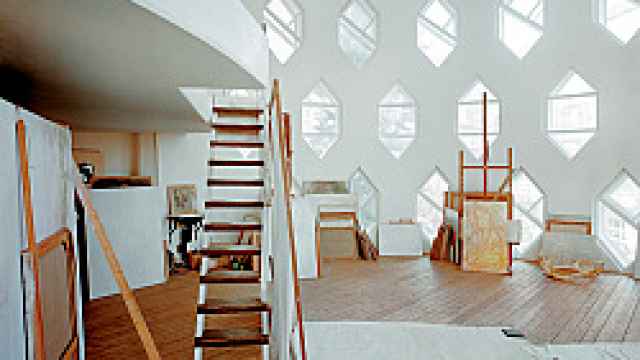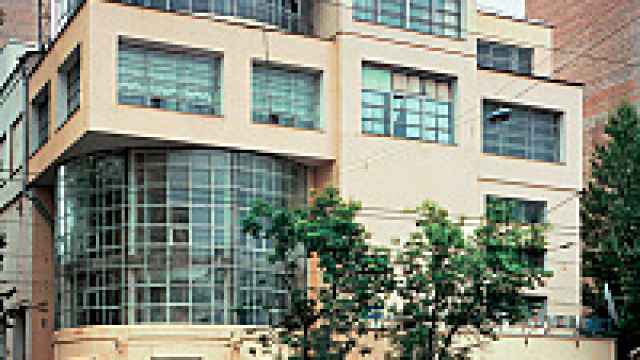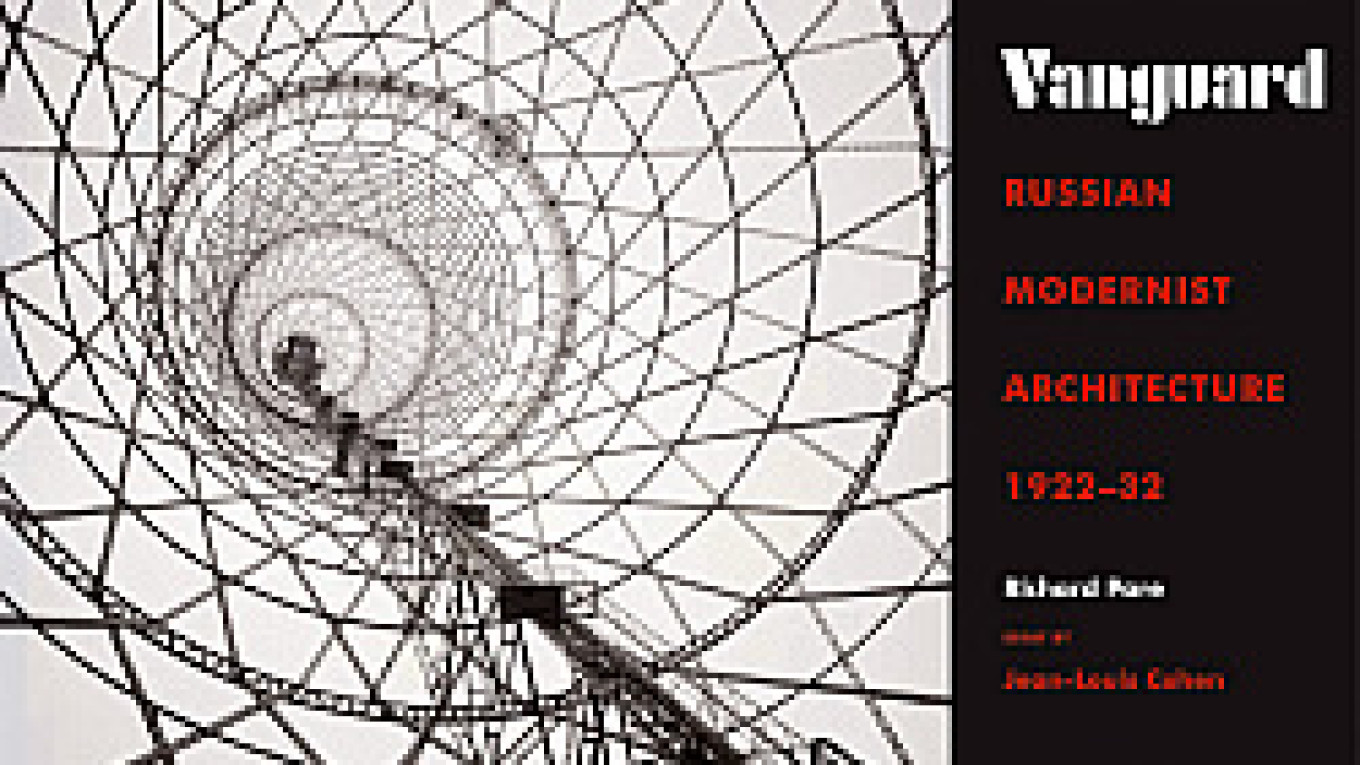Yet the results of the competition point not to a repudiation of the modernist style but rather to the Soviet state's desire to signify its power and authority. Modernism's lucid transparency was unsuited to the task. With the end of the First Five-Year Plan in 1932, the leaders aimed to represent their achievements in the great push to the future using a grand and unequivocal language that would speak both to the masses and to the world. (It was boasted that the Palace of Soviets would be the tallest building in the world, outstripping even -- and perhaps especially -- New York's Empire State Building.) The ability of monumental architecture to illustrate Soviet success nevertheless sounded the death knell for the modernist style in Russia, which had begun to make its mark only a decade before.
When architectural photographer Richard Pare first arrived in Russia some 70 years later, he sought out these modernist remains and found not a handful of extant buildings but some 70 constructions -- factories, residential and government buildings, power plants, workers' clubs, department stores and sanatoriums -- in cities from Moscow and St. Petersburg to Baku and Sochi. His archive of 10,000 negatives bears out his discovery, and a generous selection of these images, captured over the course of more than 10 years, forms the subject of a magnificent new book, "The Lost Vanguard," and an exhibition at New York's Museum of Modern Art set to open this week.
 Richard Pare / Monacelli Press Water damage and soaring land values threaten the future of Melnikov's cylindrical house-studio on Krivoarbatsky Pereulok. | |
Konstantin Melnikov's cylindrical house in the Arbat district of Moscow is unique among Pare's finds, for it remains the only single-family dwelling in the modernist style constructed in a city renowned for cramped communal living quarters -- and the architect himself lived there until his death in 1974. That such a structure survived in Moscow's center at all is a wonder, given not just later hostility to the ideals of the avant-garde but the massive Soviet-era projects -- most ultimately unrealized -- that would have made a footprint so large as to stamp out any differing mark. (The house's fate is currently undecided. Melnikov's son, Viktor, lived there until his own death last year and bequeathed half-ownership to the state on the condition that it be preserved -- along with Konstantin's paintings, sketches, and architectural drawings -- as a museum. The site's current estimated value of some $40 million no doubt has developers salivating.)
 Richard Pare / Monacelli Press The Zuyev Workers' Club on Lesnaya Ulitsa is now a theater. | |
Yet when Pare speaks of modernism's characteristic "stripping away all but the most essential elements," his words suggest a second meaning: In the years of privation following domestic and foreign upheaval, communal shelter and industrial infrastructure were in high demand while materials and a trained workforce were scarce. "Very few of the laborers," he points out, "had ever held a ruler, let alone a plasterer's float." But shortages gave way to technical innovation, through a reliance on past building methods -- applying plaster over a lath substrate, for instance -- and a utilization of alternate materials -- working around a dearth of steel by using steel plates to join wooden trusses. In many cases, glass transformed otherwise compact, efficient buildings into enthusiastic participants in the new utopia. Structures such as Moscow's Zuyev Workers' Club and Mostorg Department Store, the Pravda and Izvestia buildings, and the Vasileostrovsky Factory Kitchen unite modernism's simplicity of line with large, often unbroken panels of this transparent, gleaming material. In this particularly "revolutionary" quality, one is reminded of the towering glass architecture prefigured in Yevgeny Zamyatin's proto-science-fiction novel, "We": "A solemn, bright day. On days like these you forget about all your weaknesses, imprecisions, sicknesses, and everything is crystalfixed and eternal -- like our new glass."
Pare bookends this volume with Vladimir Shukhov's Shabolovka Radio Tower and Shchusev's Lenin Mausoleum. Among the images of the tower is a shot straight up the center of the colossal structure, with its stacked hyperboloids and latticed grid work diminishing into space -- a vantage that mirrors that assumed by Alexander Rodchenko in his 1929 photograph of the same tower; the perspective in this example of Rodchenko's early work was revolutionary for offering a novel way of viewing the new culture. Shchusev's building makes an equally apt close, for his blood-red stone and black granite edifice stands simultaneously as a prime example of modernist principles and as "the dark heart and signifier of the Soviet regime."
Nicole Rudick is managing editor of Bookforum.
A Message from The Moscow Times:
Dear readers,
We are facing unprecedented challenges. Russia's Prosecutor General's Office has designated The Moscow Times as an "undesirable" organization, criminalizing our work and putting our staff at risk of prosecution. This follows our earlier unjust labeling as a "foreign agent."
These actions are direct attempts to silence independent journalism in Russia. The authorities claim our work "discredits the decisions of the Russian leadership." We see things differently: we strive to provide accurate, unbiased reporting on Russia.
We, the journalists of The Moscow Times, refuse to be silenced. But to continue our work, we need your help.
Your support, no matter how small, makes a world of difference. If you can, please support us monthly starting from just $2. It's quick to set up, and every contribution makes a significant impact.
By supporting The Moscow Times, you're defending open, independent journalism in the face of repression. Thank you for standing with us.
Remind me later.


